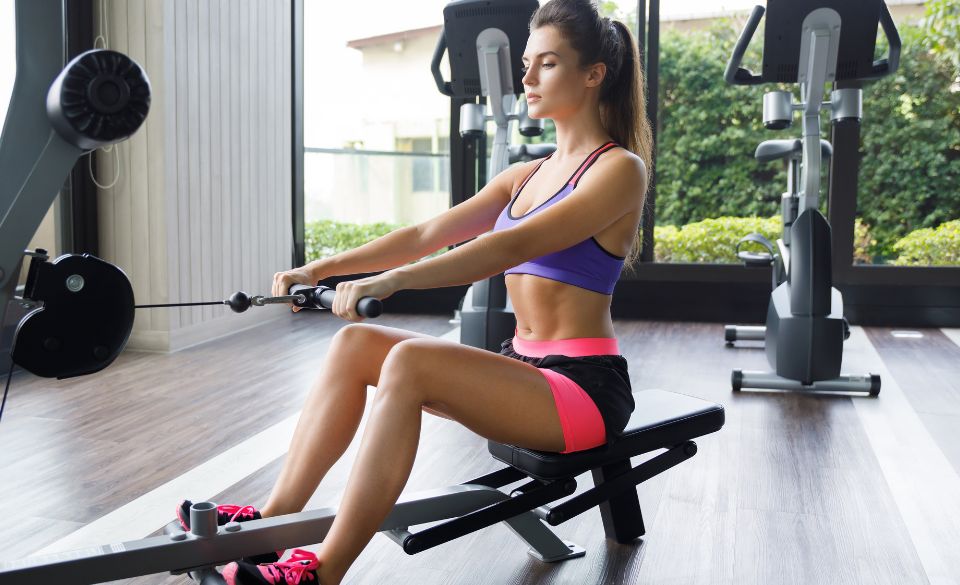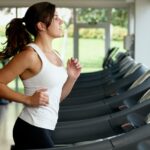
What Muscles Should Be Sore After Rowing?
Page Contents
When you hop on a rowing machine and give it your all during a workout, it’s common to experience some muscle soreness afterward. Rowing is a full-body exercise that engages multiple muscle groups simultaneously. Understanding which muscles should be sore after rowing can give you insights into the effectiveness of your workout and help you identify areas of focus for your fitness goals.
The Major Muscle Groups Involved in Rowing
Rowing is often hailed as a highly efficient workout because it engages both the upper and lower body, as well as the core muscles. Here are the major muscle groups that are actively used during the rowing motion:
Legs: The leg muscles, including the quadriceps, hamstrings, and calves, play a significant role in rowing. When you push off the footplate to initiate the stroke, the leg muscles are responsible for generating power and propelling you backward.
Back and Shoulders: The rowing stroke involves a strong pulling motion with the arms, engaging the back muscles, particularly the latissimus dorsi (lats) and the trapezius. The rhomboids, located between the shoulder blades, also contribute to the pulling motion.
Arms: The biceps and triceps muscles in the upper arms are activated during the rowing stroke. As you pull the handle towards your body, the biceps contract to flex the elbows, while the triceps engage to extend the elbows during the recovery phase.
Core: The core muscles, including the abdominals, obliques, and lower back muscles, are essential for maintaining stability and proper posture throughout the rowing motion. These muscles help stabilize the spine and transfer power from the legs to the upper body.
Studies on Muscle Activation During Rowing
Several studies have examined the muscle activation patterns during rowing to provide further insights into which muscles are most involved in the exercise. A study published in the Journal of Strength and Conditioning Research found that rowing primarily activates the quadriceps, hamstrings, glutes, latissimus dorsi, and upper back muscles.
Another study published in the European Journal of Applied Physiology investigated the muscle activation patterns in male rowers and discovered that rowing predominantly activates the leg and back muscles. The study highlighted the importance of leg power and the involvement of the lower back muscles during the drive phase of the rowing stroke.
Understanding Post-Rowing Muscle Soreness
After an intense rowing workout, it’s normal to experience muscle soreness, known as delayed onset muscle soreness (DOMS), in the targeted muscle groups. DOMS typically peaks around 24 to 48 hours after exercise and is a result of microscopic damage to the muscle fibers.
If you feel soreness in your quadriceps, hamstrings, glutes, back muscles, or even your arms and core, it’s a good sign that you’ve engaged these muscles effectively during your rowing session. However, the absence of muscle soreness doesn’t necessarily mean your workout was ineffective. Some individuals may have a higher tolerance for muscle soreness or may not experience it as prominently.
Remember to listen to your body and give yourself adequate time to recover between rowing sessions. Gradually increase the intensity and duration of your workouts to prevent excessive muscle soreness and reduce the risk of injury.
Tips for Managing Post-Rowing Muscle Soreness
While muscle soreness after rowing is a normal part of the exercise process, there are steps you can take to manage and alleviate the discomfort. Here are some helpful tips for dealing with post-rowing muscle soreness:
1. Rest and Recovery
Allowing your muscles ample time to rest and recover is essential for reducing muscle soreness. Schedule rest days between rowing workouts to give your muscles a chance to repair and rebuild. During rest days, focus on gentle stretching, low-impact activities like walking, or other forms of active recovery such as yoga or light swimming.
2. Proper Nutrition and Hydration
Maintaining a well-balanced diet that includes adequate protein, carbohydrates, and healthy fats is crucial for muscle recovery. Protein provides the building blocks necessary for repairing damaged muscle fibers, while carbohydrates replenish glycogen stores for energy. Hydration is also important for supporting muscle function and recovery. Drink plenty of water throughout the day to stay hydrated, especially after your rowing workouts.
3. Stretching and Foam Rolling
Incorporating regular stretching and foam rolling sessions into your routine can help relieve muscle tension and soreness. Focus on stretching the major muscle groups involved in rowing, including the legs, back, shoulders, and core. Foam rolling can also help release muscle knots and trigger points, promoting better blood circulation and aiding in muscle recovery.
4. Gradual Progression and Technique
Ensure that you’re gradually progressing your rowing workouts and not pushing yourself too hard too soon. Gradually increase the intensity, duration, or resistance of your rowing sessions over time. This gradual progression allows your muscles to adapt and reduces the likelihood of excessive muscle soreness or injury.
Additionally, pay attention to your rowing technique. Proper form is not only crucial for maximizing the effectiveness of your workouts but also for minimizing unnecessary strain on your muscles. Take the time to learn and practice proper rowing technique to ensure that you’re engaging the targeted muscles effectively and reducing the risk of overuse or improper muscle activation.
5. Hot and Cold Therapy
Applying hot and cold therapy to sore muscles can help alleviate discomfort and promote muscle recovery. Immediately after your rowing session, you can apply an ice pack or a cold compress to the sore areas for about 15-20 minutes to reduce inflammation. Later, after the first 48 hours, you can use a heating pad or take a warm bath to help relax and soothe the muscles.
Remember, muscle soreness is a natural response to exercise, and it typically resolves within a few days. However, if you experience severe or persistent pain, or if you have concerns about your muscle soreness, it’s always a good idea to consult with a healthcare professional for proper evaluation and guidance.
By incorporating these tips into your routine, you can effectively manage and minimize post-rowing muscle soreness, allowing you to continue enjoying the benefits of this excellent full-body exercise.
Final Words
Rowing is a highly effective full-body workout that engages multiple muscle groups simultaneously. The major muscles involved in rowing include the legs, back and shoulders, arms, and core. Feeling soreness in these muscle groups after a rowing session is common and indicates that you’ve effectively engaged and challenged those muscles.
However, the absence of muscle soreness doesn’t necessarily mean your workout was ineffective. It’s important to note that individual experiences of muscle soreness can vary. Some people may be more prone to muscle soreness, while others may not experience it as intensely. The key is to focus on proper form, gradually increase the intensity of your workouts, and listen to your body’s cues.
Understanding which muscles should be sore after rowing can help you assess the effectiveness of your workout and make necessary adjustments. If you consistently experience soreness in certain muscle groups, it may indicate that you’re effectively targeting and challenging those areas. On the other hand, if you consistently feel soreness in one area while neglecting others, it might be worth adjusting your technique or incorporating additional exercises to ensure balanced muscle development.
To minimize muscle soreness and aid in recovery, there are several strategies you can implement. Make sure to properly warm up before your rowing session and cool down afterward. Stretching exercises that target the major muscle groups involved in rowing can help alleviate muscle tightness and soreness. Additionally, incorporating rest days into your workout routine is crucial to allow your muscles time to recover and repair.
In conclusion, rowing is a highly effective full-body exercise that engages multiple muscle groups. Feeling soreness in the legs, back, shoulders, arms, and core after rowing is a positive indication that you’ve effectively worked those muscles. However, individual experiences of muscle soreness may vary, and the absence of soreness doesn’t necessarily mean your workout was ineffective. Listen to your body, focus on proper form, gradually increase the intensity of your workouts, and allow for proper recovery to maximize the benefits of rowing and minimize the risk of injury.



